Minding the metalworking fluids
Dr. Nancy McGuire, Contributing Editor | TLT Feature Article April 2016
How the right tests, consistent monitoring and accurate records reduce machine down time and maintenance costs.
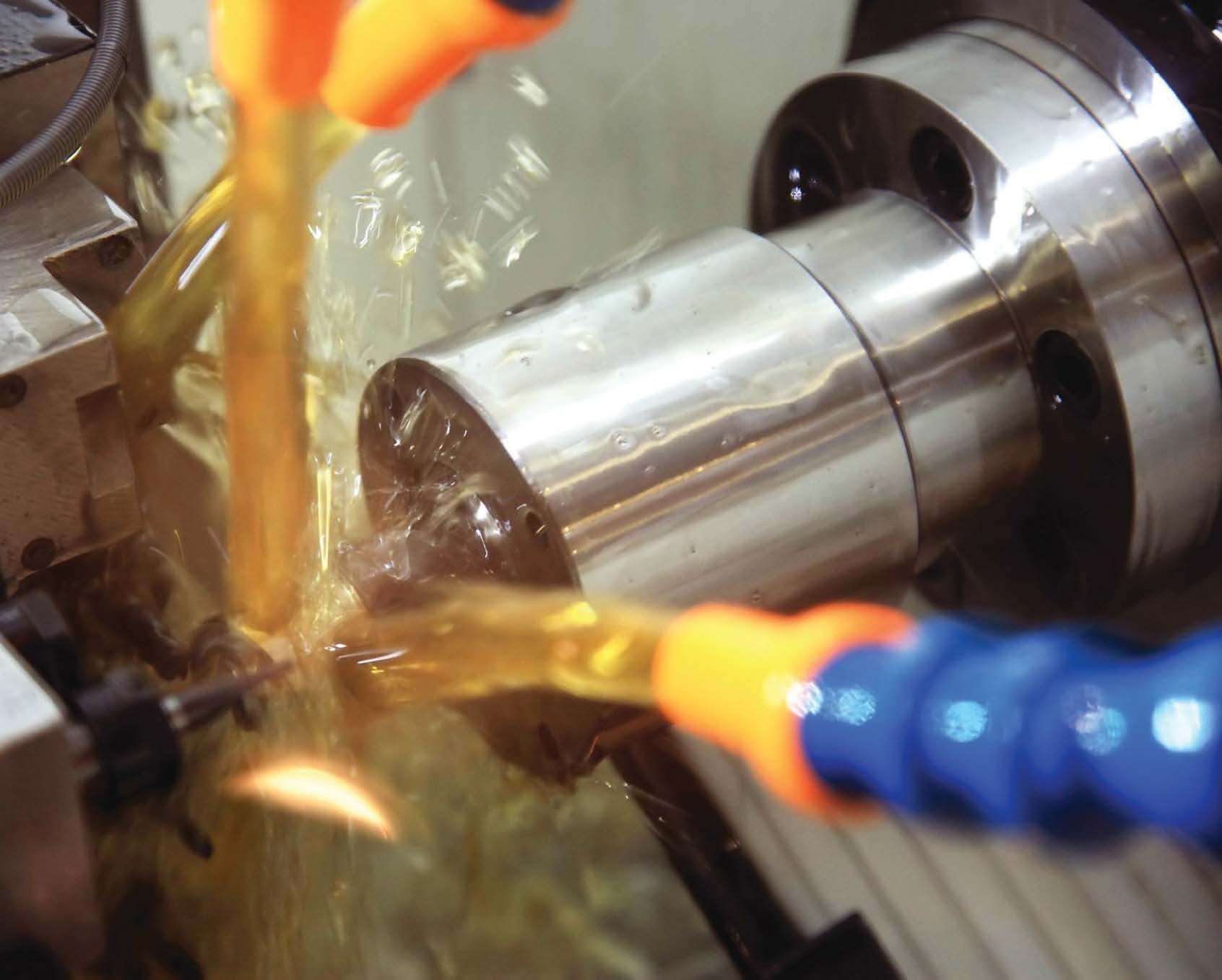
© Can Stock Photo Inc. / sspopov
KEY CONCEPTS
•
Metalworking operations are highly individualized and require a high degree of fluid customization.
•
Water-dilutable fluids and straight oils need different types of monitoring.
•
Fluid managers and vendors work with metal shop staff to match fluids to operations and keep fluids in good condition.
PROPERLY MAINTAINED METALWORKING FLUIDS (MWFs) PROVIDE LUBRICITY, COOLING, and corrosion inhibition, and they flush chips and other debris away from the work surface. Unlike hydraulic or lubricating fluids, metalworking fluids are exposed to the shop environment—they can pick up microbes, dust and other contaminants in a way that other fluids don’t. Keeping fluids in good shape requires knowing the sources of performance-limiting problems, knowing how to prevent them and catching problems in the early stages.
There are numerous ASTM standard test methods covering many of the condition monitoring protocols used for MWFs, but the real issue is that the variety of demands on MWFs is greater than those placed on, say, engine lubricants. It’s a wide open market, and end-users work with whatever provides the best performance, says STLE-member Neil Canter, principal at Chemical Solutions in Willow Grove, Pa. He notes that metal shops rely heavily on longstanding relationships with their fluid vendors and management services, which can provide testing services and recommendations.
WATER-DILUTABLE FLUID WARNING SIGNS
Regular monitoring and maintenance are especially important for water-dilutable fluids, which are gaining in popularity. These fluids, which include synthetics, semisynthetics and emulsifiable (also known as soluble) oils provide more cooling than straight oils do (
see Oil and Water: Types of Metalworking Fluids). Cooling is critical in high-speed, high-throughput and high-friction operations. But these fluids require consistent monitoring for levels of antifoam additives, biocides, corrosion inhibitors, emulsifiers and reserve alkalinity boosters. Some water-based fluids require checking every day or two to prevent bacteria and fungus from taking hold. The primary driver for condition monitoring (CM) frequency is the metalworking operation. A given MWF is likely to need more frequent CM when used in one application than in another. For example, an MWF used for a high-speed, tight tolerance operation will have more intense CM requirements than the same fluid used for a slower speed operation producing parts whose finishes and dimensions are more forgiving.
OIL AND WATER: TYPES OF METALWORKING FLUIDS
A wide range of metalworking fluids is required for the many different types of metal alloys and machining operations. Definitions for specific metalworking fluid types can be found in ASTM D2881-12 (2014) (
1). Machine shops often use more than one fluid to meet their needs.
Straight oils are most commonly used in medium- to heavy-duty machining such as broaching (an operation that removes a thick layer of metal). These mineral-based oils may be blended with additives to supplement their performance. When an application mainly requires lubricity, straight oils do the job. This is the only metalworking fluid type not diluted with water.
On the other end of the spectrum are water-based synthetic fluids. These fluids are mainly used for finishing operations like grinding where their main function is cooling. Synthetic fluids provide a small degree of lubricity through the use of ethylene oxide/propylene oxide block copolymers.
In between are the emulsifiable oils and semisynthetic fluids. Emulsifiable oils are based on mineral oils and are used for medium- to heavy-duty applications requiring lubricity. Unlike the straight oils, they can be diluted with water to enhance their cooling capabilities. Advantages of these oils include good cost performance and ease of waste treatment.
Semisynthetics are the most versatile metalworking fluids, combining water and oil base stocks with a variety of additives. These fluids are microemulsions that can have an oil content between 5%-50% (
2). The versatility of semisynthetics allows you to use one fluid for several applications, adjusting the amount of water to fit the usage.
The type of fluid you choose depends on the metal alloy, the machining operation and the preference of the operator.
Water-dilutable fluids are sold as concentrates and diluted on-site. The resulting mixture can be 90%-95% water, but concentrations can change over time due to degradation, contamination and water evaporation. Thus, concentration monitoring and topping off are critical to good operations.
Some shops contract with fluid management services to keep up with this, but other companies rely on staff to perform these services in-house. Best practice fluid maintenance requires 6-10 tests, Canter says, and most of these are easy to perform. Monitoring for pH, conductivity, concentration, total alkalinity, microbes and dirt are pretty standard, he notes.
Microbial contamination, bacteria and fungi in particular, is a key concern with these fluids. A sump containing a water-based MWF that sits idle over the weekend can smell like a barn full of rotten eggs on Monday, especially if it has a film of tramp oil (hydraulic and lubricant oils that stray into the sump) covering the surface and a pile of cast iron chips lining the bottom. This phenomenon, in fact, is sometimes referred to as Monday Morning Odor (MMO).
However, systems without a trace of tramp oil also produce MMO. The mechanism is the same, regardless of the presence of an oil layer. Microbes produce a bouquet of foul smelling, volatile organic compounds (VOCs) and hydrogen sulfide (H
2S) continuously. When recirculation pumps are operating, the MWF is well aerated and the malodorous molecules are oxidized before they escape. When systems are shut down, oxygen in MWF is depleted quickly, and VOCs and H
2S accumulate in the stagnant MWF. When pumps are restarted on Monday morning, these gases escape before they can be oxidized. The result is MMO. It invariably takes several hours of ventilation and MWF recirculation to clear the air after Monday morning gas-release. H
2S (rotten-egg odor) is produced by sulfate reducing bacteria-anaerobic bacteria that get their energy by reduction sulfate to H
2S. However, aerobic bacteria scavenge the oxygen out of the MWF and thereby create conditions appropriate for aerobic bacteria to grow. Both aerobes and anaerobes produce waste metabolites that contribute to the odiferous MMO bouquet.
Even a thin film of hydraulic or lubricating oil can seal off a tankful of fluid from contact with air. This creates an ideal environment for a diverse community (recent genetic testing has shown that MWFs can contain >1,000 different species of microbes) for bacterial growth and biodeterioration activity.
Other signs of a poorly maintained water-based fluid include hard water deposits, staining and corrosion of parts and tools, fluid foaming and emulsions that separate. Tramp oil often contains antiwear additives (such as zinc dialkyldithiophosphates, ZDDPs) that can demulsify the metalworking fluid. Hard water not only leaves mineral deposits; it can interfere with emulsifiers in much the same way that it leaves a soap scum ring around your bathtub. Filters and conduits can become clogged with metal chips, dirt and bacterial or fungal colonies. Foaming can become a problem in high-speed milling operations when antifoam additive levels drop too low.
STRAIGHT OIL STRATEGIES
Straight oils, commonly used in heavy-duty machining operations, are not diluted, but they do contain various additives. They provide more lubrication than cooling, but when they fail to lubricate, friction and heat buildup can actually cause the oil to catch fire. Under severe conditions, hot metal chips can weld themselves to tool tips and manufactured parts.
“Straight oils don’t have the same foaming and bacterial problems as water-dilutable fluids,” says STLE-member April Stevens, industry manager for metalworking at Monson, an Azelis Americas company (formerly Colonial Specialty Chemicals), a specialty chemicals distributing company that focuses on the lubes, metalworking and grease markets. However, she continued, you do get viscosity changes, contamination from tramp oil and cleaners, oxidation and depletion of EP and lubricity additives. Fluid monitoring involves measuring additive levels, clarity, color, copper corrosion and flash point, and checking for the presence of water.
Richard French, environmental team leader at Bristol Industries in Brea, Calif., notes that his company’s operations use mostly straight-oil fluids. Bristol, which manufactures nuts and other fasteners for the aerospace industry, deals with hard metals, including steel, superalloys and titanium. Their processes include stamping sheet metal, cold-forming and screw machining. “We’re selling a threaded hole,” he says, explaining that the operations require the heavy-duty performance characteristics of oil-based fluids.
In Bristol’s 180,000 square foot building, only about 10 machines use water-based fluids, French says. They only use about six types of MWFs in order to control inventory and minimize the complexity that arises from keeping track of multiple safety and environmental requirements.
Fluid maintenance at Bristol involves keeping tap life records—how many threaded parts can a tap produce before its performance begins to decline? A degraded oil provides less lubricity between the tap and the nut, causing the tap to work harder and wearing it down. Tool operators keep an eye on oil color and watch for signs of cloudiness, both of which indicate a buildup of metal particles in the oil.
Vendors promoting new products are asked to provide a report containing lab analysis results and summarizing the characteristics of the fluid, French continues. They also are asked to provide a sample of the fluid, which is tested on one of Bristol’s machines to see if it meets the performance standards required by the operation.
Bristol used about 24,000 gallons of metalworking fluid in 2015 (and disposed of about 14,000 gallons), and its low-maintenance monitoring routine seems to work well for the company. Bristol did have to replace about 4,000 gallons of oil once, French says, when an oil-handling crew in the plant accidentally mixed a batch of recycled high-sulfur oil with the recycled metalworking oil. Lab testing might have prevented this problem, but good container labeling practices and worker training are effective as well.
Bristol contracts with a fluid management company that helps it keep current on fluids with better performance and a longer run life, as well as complying with environmental regulations. French noted that the company requests fluids without chlorinated paraffins, which pose a waste disposal problem. (
Editor’s note: For more on the EPA’s ruling on chlorinated paraffins, see the special industry report in the March 2016 TLT.)
WHY MONITOR?
“Regular and consistent monitoring of MWFs can help you spot deterioration in the early stages, so you can head off a potential problem before a batch of defective parts forces you to shut down operations to correct the problem,” says STLE-member Jason Papacek, director of technical services at POLARIS Labs’ headquarters in Indianapolis, Ind. “Customers don’t want to pay for scrap,” he adds.
Preventing problems can save money by letting you use fluids, especially water-dilutable fluids, longer before having to replace them, explains Stevens. She notes that keeping bacteria and fungus at bay requires regular monitoring of additive concentrations (some additives serve as nutrients to microbes) and pH levels. Tramp oil not only promotes bacterial growth, but it also can break down metalworking fluid emulsions. Letting fluid problems get out of hand can reduce tool life and cause health problems for shop workers, she says.
Regular fluid monitoring and testing is a key element of condition-based maintenance. Rather than topping off additives and replacing fluid batches on a fixed schedule, these steps are taken when the fluid requires it. This varies based on the nature of the metal (e.g., steel versus aluminum or titanium), the type of operation (grinding, forming, cutting), the speed and throughput of the operations and the properties of the fluid itself (
see Figure 1).
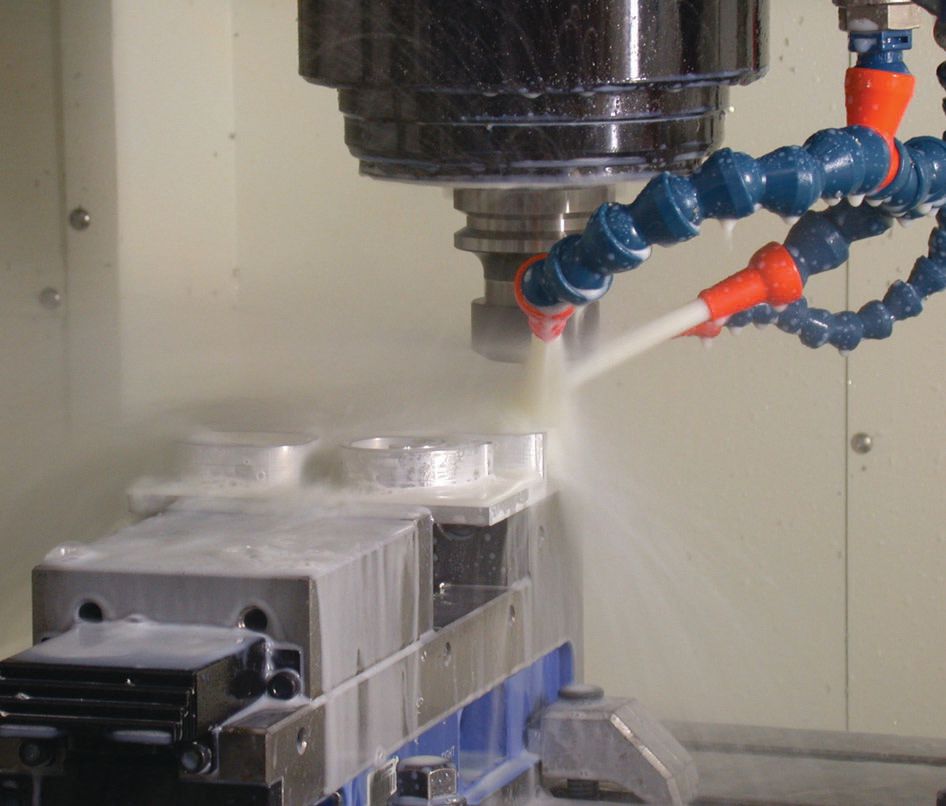 Figure 1. Cutting fluid sprayed on a milling machine. (Photo courtesy of Glenn McKechnie.)
Figure 1. Cutting fluid sprayed on a milling machine. (Photo courtesy of Glenn McKechnie.)
“Condition-based maintenance not only saves money, but it helps prevent over- or under-treating fluids,” says Papacek. “For example, adding too much antifoam can actually increase the amount of foam.” Some additives affect the pH of the solution, so if you over-treat, you could damage the surface finish of the parts you make. “Surface finish is usually a principal concern” for machined parts, he notes.
Keeping an eye on things, including keeping good records, prevents you from disposing of a fluid before the end of its operational lifetime, but it also reveals developing trends that could force you to replace the fluid earlier than usual. A batch of fluid that requires more and more frequent topping off of the additives, or one where the additives do not stay emulsified in the fluid, might be an indication that the fluid is reaching the end of its useful life (
2).
Testing new fluids gives you an idea of how they are going to perform—how much water hardness or tramp oil they will withstand, for example. Much of this information is available from the fluid manufacturer, but metalworking operations tend to be highly individualized, and each operation introduces its own variables into the mix.
WHO DOES THE TESTING?
Because metalworking fluids rely heavily on proper maintenance, lab and on-site testing is an important factor in keeping the process in control, says Papacek. Metalworking fluids tend to be specialized, and their applications are highly process- and site-dependent. Users customize the component balance and additives to their own processes, and they often do their testing on-site, he says.
Commercial testing laboratories generally turn samples around in one to five business days, depending on how routine and complex the tests are. A concentration by refractometer or pH test might take just moments; microbial culture tests (bacteria, fungus, mold) will take longer as it takes time to grow the microbial colonies.
Some tests can be done in the metal shop, using paper test strips, premade test kits or handheld devices. For very small operations, a visual (and odor) inspection of the sump could be sufficient. Larger sumps or central systems might require monitoring every day or two.
Large operations maintain in-house labs, complete with fluid experts on staff, for more sophisticated testing and troubleshooting. Manufacturing operations have high throughput, which makes it worthwhile to have an in-house lab for quick feedback, notes Papacek.
Independent testing labs routinely augment lubricant test reports with recommendations based on the data. However, for MWF samples, they provide only the test data, Papacek says. Metalworking fluid testing represents a small part of POLARIS Lab’s business, and most of the lab’s metalworking customers are end-users, rather than metalworking fluid manufacturers, who have their own labs. Some end-users send in troubleshooting samples when there’s a problem, but others send monthly or quarterly check samples to validate results from their in-house laboratories and field tests.
Fluid distributing companies often offer testing services, but Stevens and Papacek agree that this aspect of the business is shrinking as oil distributors move out of the metalworking fluids market. Canter concurs, noting that many high-speed machining operations require the cooling that water-dilutable fluids provide. Because these fluids are sold as concentrates, their performance depends in part on factors introduced by the end-user, including water quality, dilution levels, specialized additives, reactive metal residues and tramp oil contamination.
WHAT DO YOU TEST?
The level of sophistication of your fluid testing regimen depends on the size and throughput of your operation and the specific requirements of the metals, processes and fluids you deal with. (
See Reference 3 for a comprehensive review of metalworking fluid properties and testing.)
Fluid testing can be as simple as dipping a paper pH test strip into the sump and matching the color change against a reference chart, although handheld pH meters give you more precise readouts with almost the same speed and ease of use (
see Figure 2). When pH readings fall below about 8.5, it is typically a clear indication that microbial activity has gotten out of control.
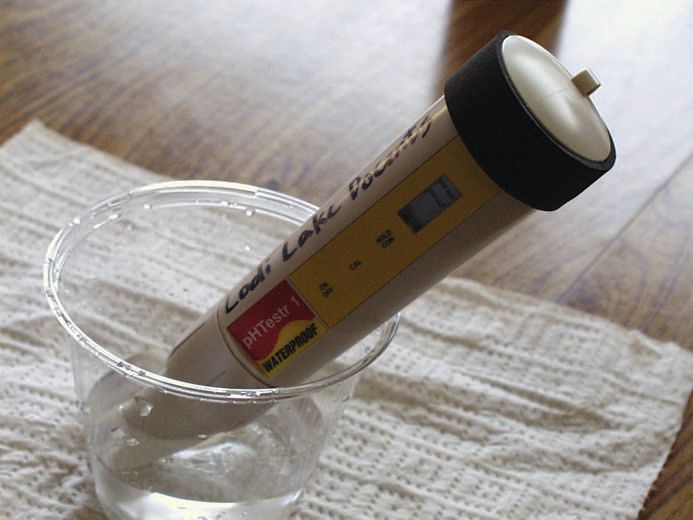 Figure 2. A compact pH meter. (Photo courtesy of www.lodi.gov/Storm_Drain_Detectives.)
Figure 2. A compact pH meter. (Photo courtesy of www.lodi.gov/Storm_Drain_Detectives.)
Handheld refractometers are a relatively inexpensive and easy way to determine concentrate levels in fluids that are diluted with water (
see Figure 3). Numerical readings from the refractometer are multiplied by a fluid-specific factor provided by the fluid manufacturer. This factor is sometimes modified to account for practical experience in the shop.
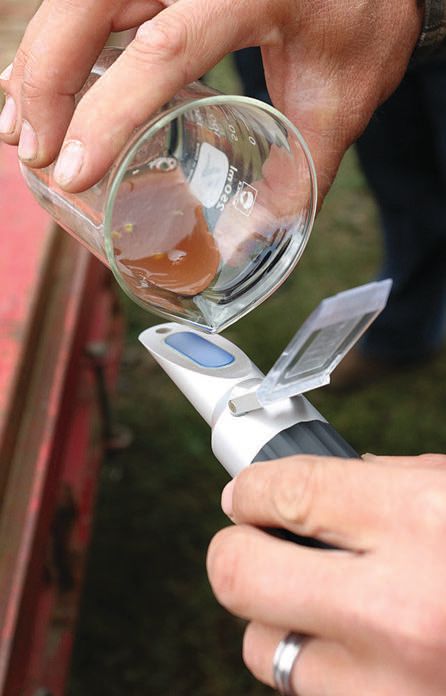 Figure 3. Person pouring a fruit juice sample onto a refractometer plate. (Photo courtesy of Lyza at www.flickr.com/photos/lyza/.)
Figure 3. Person pouring a fruit juice sample onto a refractometer plate. (Photo courtesy of Lyza at www.flickr.com/photos/lyza/.)
Particle counters can stave off problems with metal chips and fines, as well as dirt and dust. Particles larger than 10 microns can clog filters and recirculating systems, and particles smaller than 10 microns destabilize emulsions. Some particle counters can measure particles as small as a few tenths of a micron across.
Dip slides—paddle-shaped devices with a coating of agar or other microbial culture medium on one end—are the simplest means of microbial testing. As the name suggests, you dip them into the fluid. Afterward, you allow the slides to incubate and count the microbial colonies. Simple microbial colony counts can be done at an in-house lab, but you might have to send samples out for more sophisticated tests including adenosine triphosphate measurement by enzymatic luminescence spectroscopy (ASTM Test Method E2694), measurement of dissolved oxygen (DO) and catalase testing. The data can then be used in time to guide preventive action. Taking samples requires some basic user training—you have to be careful not to cross-contaminate samples. Samples should be taken from a sampling or drain valve or obtained by dipping an unused bottle more than five centimeters below the surface of the bulk fluid.
EP additives contain sulfur, chlorine and phosphorus compounds, Stevens says. Tests for these components are more difficult to do on-site, but you can send samples to a testing lab or your metalworking fluid supplier for tests.
Large-scale operations and manufacturers that develop and benchmark new metalworking fluids rely on in-house or commercial testing laboratories to identify and quantify specific chemical components of a fluid or its contaminants. Titration methods can provide precise information on reserve alkalinity levels and mineral components in the water, including hard water cations (calcium and magnesium). Conductivity measurements test for electrolytes (e.g., chloride ions) that can lead to corrosion problems.
Testing labs also can identify nitrogen-containing compounds, including amines, amides and ammonium salts that come from oxidation inhibitors, emulsifiers, surfactants, pH buffers, biocides and microbial activity. Relatively benign nitrogen compounds can be transformed into toxic or carcinogenic compounds under high heat and pressure conditions, so fluid developers keep an eye on them using chemical analysis.
Spectrometers provide ultra-precise monitoring of color changes (a sign of possible microbial or tramp oil contamination or fluid degradation). Turbidimeters track changes in fluid clarity, an early warning signal of particulate contamination or emulsion breakdown (
see Figure 4). Viscometry keeps tabs on lubricity changes in straight oils. The effectiveness of corrosion inhibitors can be monitored using standardized cast iron chips (ASTM method D4627).
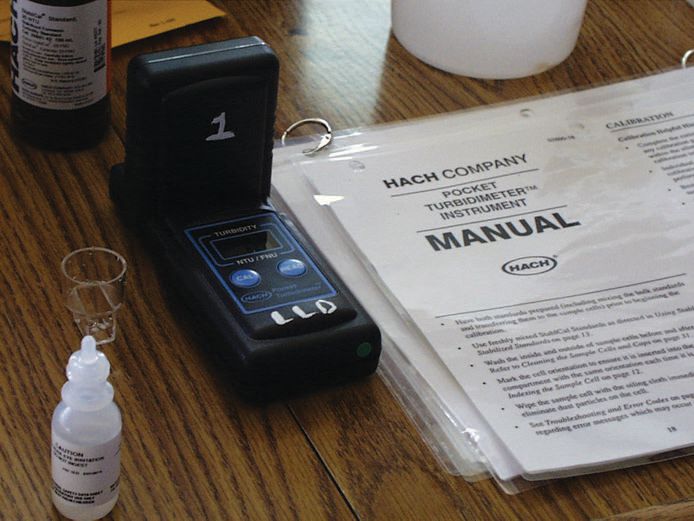 Figure 4. A turbidimeter that tracks changes in fluid clarity. (Photo courtesy of www.lodi.gov/Storm_Drain_Detectives.)
Figure 4. A turbidimeter that tracks changes in fluid clarity. (Photo courtesy of www.lodi.gov/Storm_Drain_Detectives.)
Tramp oil levels can be measured using an acid split test to separate the oil and water phases of an emulsion. This test procedure enables end-users also to determine how much free oil (floating on top of the MWF) and entrained oil are present.
HEALTH AND ENVIRONMENTAL ISSUES
The motivation for good fluid maintenance is mostly economic, says Stevens. However, worker safety and environmental issues also factor in.
From an environmental standpoint, the fact that microbes find water-based fluids tasty can actually be a benefit—that’s what biodegradability is all about. However, you don’t want the biodegradation process to start until you finish using the fluid, so monitoring and maintaining biocide levels helps keep microbe levels under control.
Despite all scientific evidence to the contrary (
4), officials with the U.S. EPA’s Office of Pesticides Programs, and consequently MWF formulators and end-users, are perennially concerned about hexahydro-1,3,5-tris (2-hydroxyethyl)-s-triazine and other biocides. However, regulations limit the ingredients that can be used to manufacture the fluids, which eases the burden on end-users.
It is commonly (and erroneously) believed that dermatitis (one of the most common worker safety problems) is caused by bacteria and fungi growing in the fluids. Prof E.O. Bennett did a substantial amount of work testing this erroneous theory and found that irritant contact dermatitis was invariable a reaction of the skin to various chemicals, and was not caused by microbial infection. Conditions that are unfriendly to skin are excessive MWF concentrations, high pH or alkalinity, contaminants (e.g., cleaners and tramp oils) or overuse of additives (e.g., microbicides or rust preventives). Certain dissolved metals also can cause dermatitis. Numerous microscopic cuts and abrasions caused by metal particles in MWFs can render workers susceptible to irritation. Allergic reaction to one or more MWF component molecules can result in allergic contact dermatitis.
Even fluids in good condition can cause skin irritation, however. Additive concentrates for water-containing fluids tend to be highly alkaline, and some coolants can irritate skin. Protective gloves, hand creams and protective clothing can counteract this. Most end-users have good machine enclosures and mist collectors to keep the problem contained. In the end, the best preventive measure is good personal hygiene.
WORTH THE EFFORT
Diligent MWF monitoring and maintenance more than makes up for the time and expense it requires. “The time you invest in testing is much less than the time you spend fixing problems,” says Canter.
In addition to heading off problems in the early stages, testing can extend the amount of time you use a fluid by basing the replacement schedule on the fluid’s condition and performance. Fluid testing can help prevent over-treatment as well as under-treatment by giving an accurate picture of additive levels over time.
The result is fewer defective parts, longer tool life, less waste disposal and better working conditions for employees.
REFERENCES
1.
Please see ASTM D2881-12 (2014) at
www.astm.org/Standards/D2881.htm.
2.
“Development of Guidelines for Using and Maintaining Metalworking Fluids,” White paper sponsored by STLE, May 2008, by Neil Canter.
3.
Brinksmeier, E., Meyer, D., Huesmann-Cordes, A.G. and Herrmann, C. (2015), “Metalworking fluids—Mechanisms and performance,”
CIRP Annals—Manufacturing Technology,
64 (2), pp. 605-628. DOI: 10.1016/j.cirp.2015.05.003 (open access).
4.
Passman, F., Canter, N., Rotherham, R., Byers, J. and Eachus, A. (2016), “MWF biocides part II: Science vs. fiction,” TLT,
72 (3), pp. 46-57.
 Nancy McGuire is a free-lance writer based in Silver Spring, Md. You can contact her at nmcguire@wordchemist.com
Nancy McGuire is a free-lance writer based in Silver Spring, Md. You can contact her at nmcguire@wordchemist.com.